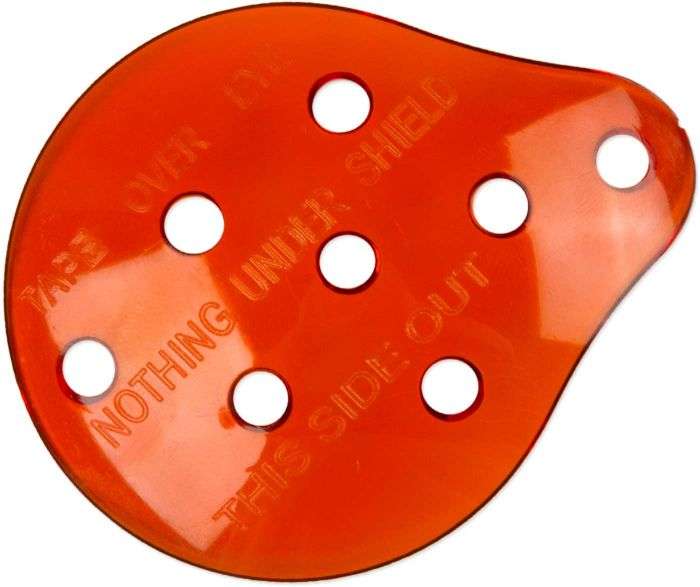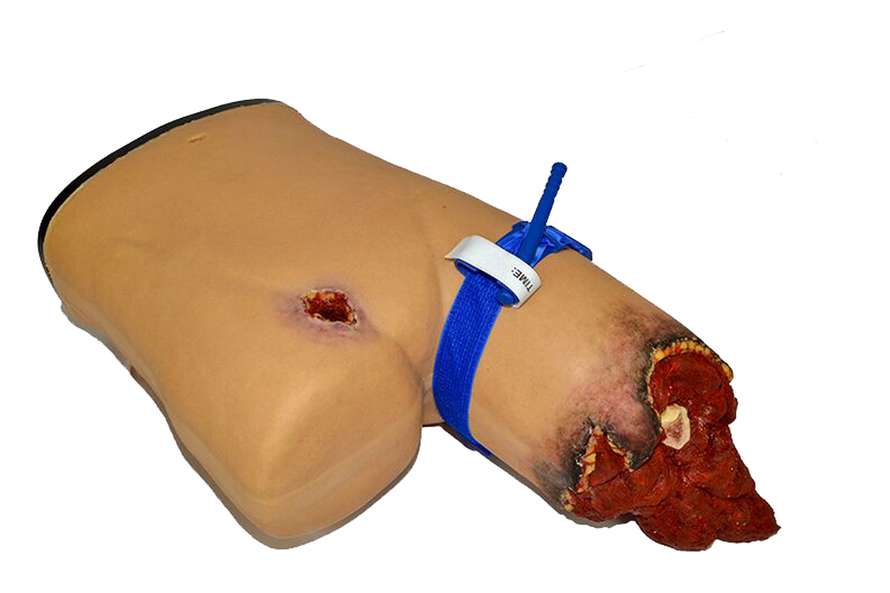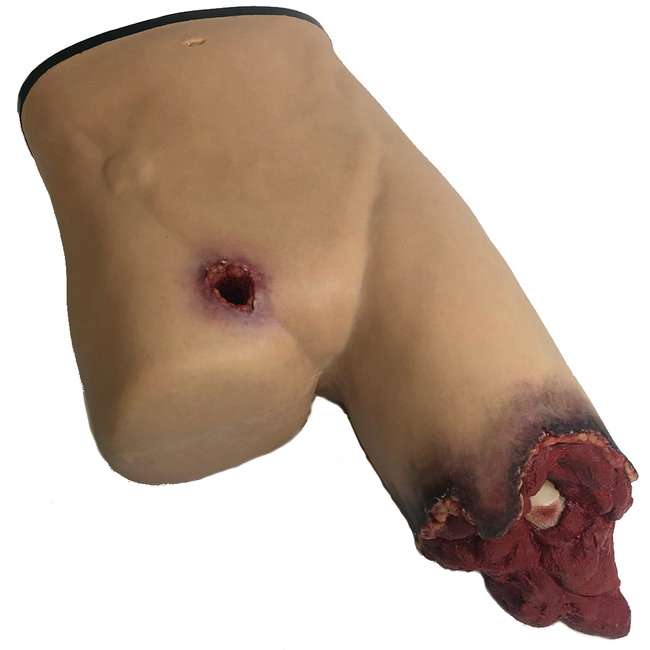Techline Bleeding Control Part Task Trainer
The PTT-B80 Bleeding Control Part Task Trainer is a simulated lower torso, featuring a full leg amputation and a gunshot wound to the inguinal crease. Using its PATENTED and PATENT PENDING mechanically responsive blood flow system, SOFTTECH® and ROCKTECH® materials. The PTT-B80 is designed to operate with Skedco brand bleeding simulation equipment. Alternatively, it may be connected to a manual pump bottle, or WW3-BRP Blood Supply Pump. The blood supply pump is not included with this device.This realistic training device responds to the following medical interventions:
- Tourniquet
- Abdominal aortic tourniquet
- Junctional tourniquet direct pressure
- Proximal pressure
- Wound packing

Construction:
The representative skin and tissue of the PTT-B80 is constructed of high quality silicone rubber, with layers of coloration that provide a depth and realism to the product. In addition, the SOFTTECH® material has a realistic feel, and is very durable and UV resistant. The skin also contains a reinforcing fabric that provides strength, and resistance to tear propagation should the skin be punctured or cut.
The inner structure of the PTT-B80 is an aluminum casting, providing strength and durability. The casting has minimum wall thicknesses of 3/16 inch. This allows the student to use his body weight for proximal pressure. It has a machined interface providing easy, robust, screw-fit assembly to the lid. The mandrel incorporates anatomical landmarks that are palpable externally to aid in bleeding control device placement.
The lid that covers the internal cavity of the PTT-B80 is fully-machined, black-anodized aluminum. It utilizes a recessed attachment face for the blood supply connectors to protect them from damage. The cover has a handle attached for easy-carry, and markings to indicate the correspondence between ports and wounds.
The PATENTED & PATENT PENDING bleeding system is comprised of blood flow lines, tourniquet responsive mechanisms, and a packable wound structure. When the proper medical interventions are taken, the bleeding will stop.



